To help us provide you with free impartial advice, we may earn a commission if you buy through links on our site. Learn more
- How to choose the best video-editing laptop for you
- The best video-editing laptops to buy in 2023
- 1. Apple MacBook Pro 16in (M2 Pro, 2023): The most powerful portable Mac
- 2. Dell XPS 17in: A sleek, streamlined video-editing platform
- 3. Apple MacBook Pro 14in (M1 Pro, 2021): An exceptional all-rounder
- 4. Lenovo Legion 5: Best Windows laptop for video editing under £1,500
- 5. Asus ROG Zephyrus Duo 16: Two screens are better than one
- 6. Razer Blade 17: An all-powerful Windows workstation
- 7. M2 Apple MacBook Air: Best budget Apple for video editing
- 8. Honor MagicBook Pro: Best video-editing laptop under £1,000
- 9. M1 Apple MacBook Pro 13in: A well-priced portable powerhouse
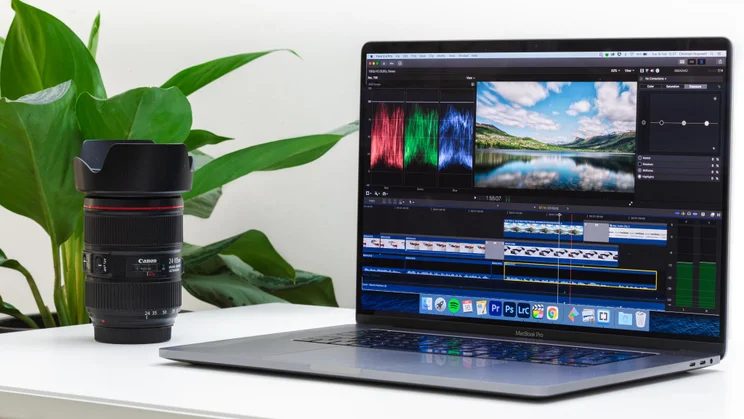
Whether you’re crafting your indie blockbuster debut, creating a YouTube vlog or just cutting together your holiday videos, the right laptop will make video editing a breeze.
While most modern laptops will allow you to get up and running with some basic video editing, an underpowered machine will quickly run into issues such as stuttering playback, overheating and endless waiting for videos to export. For those who are serious about their video editing, a whole range of laptops exist, equipped specifically for demanding content creators.
With walls of specs and seemingly endless configurations to choose from, though, honing in on the right video-editing laptop can seem a rather complicated undertaking. Fortunately, we’ve reviewed more than our fair share of laptops and put each one through its technical paces.
Below, you’ll find a concise video-editing laptop buying guide, so you know what features to look out for, followed by a list of the best laptops for video editing out of the extensive range of models we’ve reviewed.
How to choose the best video-editing laptop for you
Should you buy a MacBook or a Windows 10 laptop?
Ah, the age-old rivalry. While you’ll find plenty of debate as to whether one offers better value for money, when it comes to video editing, the decision will more often than not come down to your video-editing application of choice.
Industry-standard applications such as Black Magic DaVinci Resolve, Adobe Premiere Pro and Adobe After Effects are supported by both operating systems. If, however, you favour Apple’s own Final Cut Pro X or Motion applications, you’ll need to opt for a macOS machine. Vegas Pro, meanwhile, is Windows exclusive.
What screen size and resolution should you choose?
Before digging into hardware specifications, the next thing you should consider is screen size and resolution. Screen size is pretty self-explanatory. A larger display affords you more screen real estate while watching back clips and working your way around your video-editing application.
Most video-editing applications, such as Adobe Premiere and Final Cut, divide your screen up into a number of small panels, relegating the video preview and editing controls to small windows. While a 13in laptop will offer an edge when it comes to portability, a larger 17in model can come in really handy when working with busy editing workspaces rich with small icons and controls. 15in and 16in models can offer a nice balance between the two, and some models even offer the luxury of twin displays.
Resolution refers to the overall number of pixels in the display. This will affect how detailed your screen looks, which is not only helpful for critical viewing of your footage but also comes in handy for reading the tiny tooltips and controls that video-editing programs are notorious for.
Both size and resolution are important when deciding upon a display. While simply opting for a larger screen may seem like a straightforward choice, it won’t actually display more information than a smaller model unless it also has a higher resolution. You’ll therefore want to look to strike the right balance. Pixels per square inch (ppi) is a good indicator of how sharp a screen actually is.
It’s also worth noting that not all displays are created equal, so once you’ve settled on a screen size and resolution, you’ll want to check the reported colour accuracy for each model. This can be of critical importance when it comes to nailing your colours in editing – for skin tones especially.
What hardware specs should you look out for?
When it comes to hardware specs, the CPU (processor) is the key component to pay attention to. As the brains of any system, the CPU does the majority of the heavy lifting, and there’s plenty to do while video editing.
Ideally, you’ll want to look for a system that uses an 8th generation or newer Core i7 or Core i9 CPU from Intel, or a Ryzen 7 or 9 from AMD’s 4000 or 5000 series, as these will offer the best performance. If you’re on a tight budget, six-core Intel Core i5 and AMD Ryzen 5 machines may also be worth considering.
You’ll also want to make sure that the processors carry H or HK suffixes, while avoiding those with U or Y suffixes as the latter are designed principally with power efficiency in mind rather than outright horsepower. Apple’s new in-house M1 CPU is also proving to be an exceptionally capable option, although as it’s a relatively new architecture, you’ll need to check that your chosen video-editing application is supported natively.
Next up is RAM. How much you’ll need really depends on the type of content you’re looking to create. Generally speaking, more is better, and unless you’re opting for an M1-equipped Mac, 16GB is the minimum you’ll want to aim for. If you plan to carry out more heavy duty and complex editing in 4K and above, then you’ll want to consider 32GB.
For storage, you’ll find that solid-state drives(SSDs) are pretty much standard fare in all laptops these days. This is good news for video editors as SSDs offer a significant speed advantage over older mechanical hard drives. When weighing up drives there are two things to take into account: speed and size. While any SSD will outpace an older mechanical hard drive, some are faster than others. We’d recommend opting for a PCI-E SSD, as this will offer better performance than an older SATA drive.
When it comes to SSD size, you’ll want to make sure there’s ample storage space for your editing applications and project files. While you may get away with some light work on a 256GB drive, ideally you’ll want a system with 512GB or more, especially if you plan on working with 4K footage.
While it’s considerably cheaper than it used to be, the price for SSD storage still increases exponentially with drive size. It’s therefore worth making sure your chosen laptop has the fastest available external connectivity for when you need to plug into desktop drives (more on that later). And, despite the trend for non-upgradable laptops, it’s worth noting that there are still some systems that have free bays inside the laptop so you can increase storage capacity when funds allow.
While a dedicated GPU (graphics card) isn’t nearly as important as a good CPU, and integrated on-chip graphics have become much better in recent years, it certainly is nice to have a more powerful GPU. A GPU with dedicated VRAM can boost the responsiveness of your chosen video-editing application and it can also speed up render times in some cases.
Bear in mind, however, that the benefit you get from a GPU varies from application to application, from brand to brand and from model to model. And whether it speeds up anything at all will also depend on the type of file you’re rendering. In short, a GPU can help, but it’s by no means certain that it will, so it’s worth checking what your video-editing application supports before spending the big bucks.
What about ports and connectivity?
When weighing up physical connectivity it’s helpful to consider how your laptop will sit within your overall video-editing workflow: what peripherals will you need in order to get the job done and how will you connect to them? Will you need an SD card reader (an increasingly rare sight) for importing files? How about the ability to connect an external high-resolution monitor? Will you need a wired internet connection to upload and download hefty video files from your local network?
For convenience, it’s worth having as many of these ports available on your chosen laptop as possible, but it isn’t essential. The prevalence of USB-C these days means that, even if you have only one or two ports available to you, you can still connect all manner of external devices, and the selection of ports and sockets can be easily expanded by purchasing a USB-C dock or dongle.
Bear in mind, however, that not all USB-C ports are made equal, and some laptops come with faster ports than others. As with RAM, you want to go for the speediest, most capable connection available. Thunderbolt 3 or 4 and USB 4 come at the top of the list for speed and capabilities. The former delivers data rates of up to 40Gbits/sec and supports the connection of up to two 4K external displays. USB 4 connections are rated at either 20Gbits/sec or 40Gbits/sec and only support one external display.
The most common form of connection is the older USB 3. However, this is a lot more confusing, with speeds ranging from 5Gbits/sec to 20Gbits/sec, some ports supporting external displays and some not, some offering charging and some offering data only. What’s more, with the USB standards body changing its mind as to what the names are, it can be hard to tell one port apart from another. Here’s a quick reference table explaining what all the various USB 3 standards actually mean:
| Original term | First name change | New name | Also known as… | Speed |
| USB 3 | USB 3.1 Gen 1 | USB 3.2 Gen 1 | SuperSpeed USB | Up to 5Gbits/sec |
| USB 3.1 | USB 3.1 Gen 2 | USB 3.2 Gen 2 | SuperSpeed USB 10Gbps | Up to 10Gbits/sec |
| USB 3.2 | – | USB 3.2 Gen 2×2 | SuperSpeed USB 20Gbps | Up to 20Gbits/sec |
Is battery life important?
Video editing is a demanding task for any laptop, so no matter how big the battery or how efficient the CPU, no laptop will give you much editing time away from the mains. Moreover, the best laptops for video editing are, typically, also the most power hungry, which means their battery life scores in our benchmarks aren’t usually particularly impressive.
That’s not to say that battery life should be completely overlooked, however. If your video-editing machine is also your main work laptop, you’ll also want to make sure that it lasts a decent chunk of time away from a plug socket when you’re answering emails or writing and editing scripts. And while many powerful portables won’t last long, some are definitely better than others.
The best video-editing laptops to buy in 2023
1. Apple MacBook Pro 16in (M2 Pro, 2023): The most powerful portable Mac
Price: £2,699 | Buy now from John Lewis
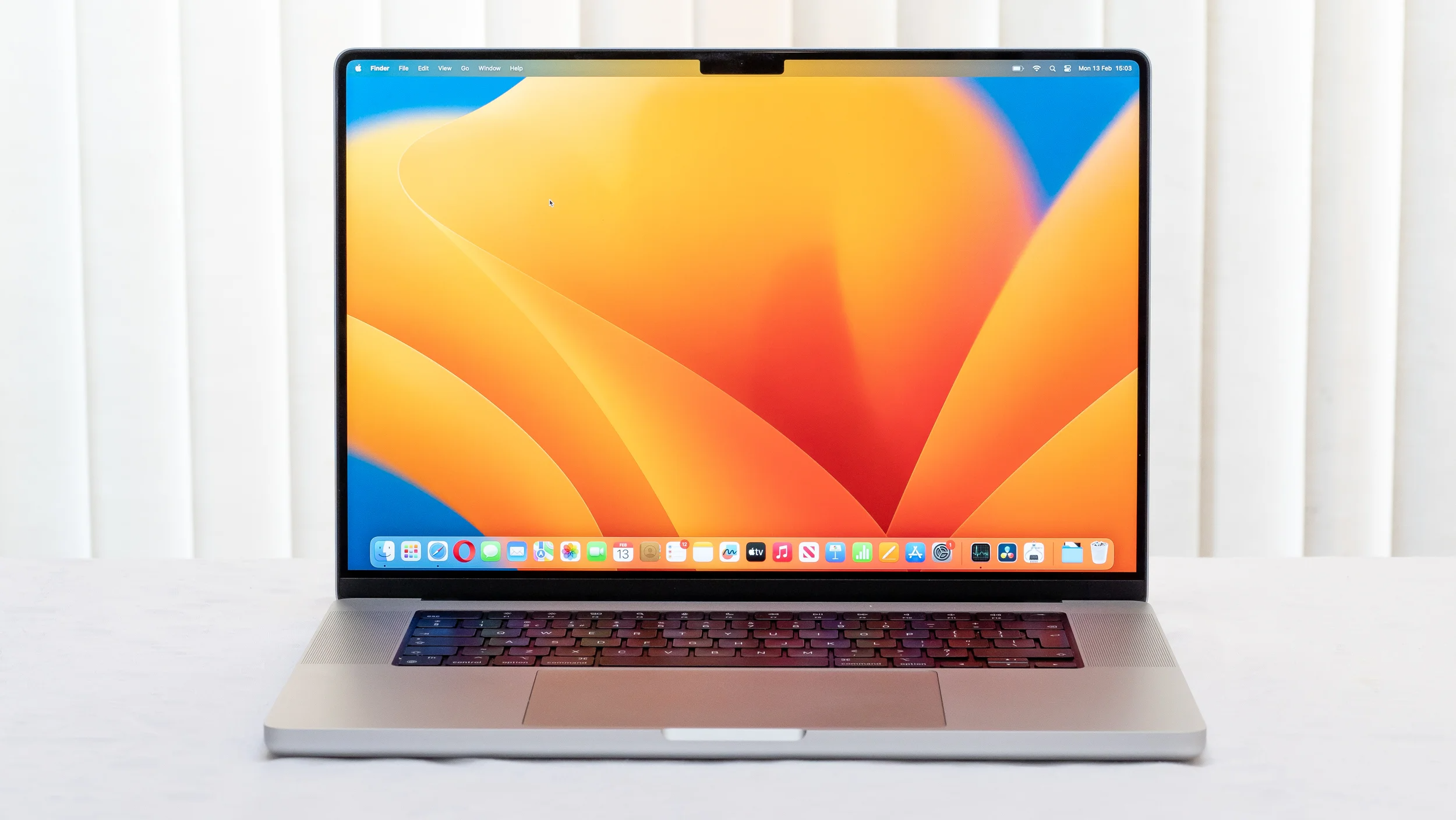
The M2-equipped 16in MacBook Pro is Apple’s most powerful mobile video editor to date and the best MacBook Pro we’ve ever reviewed.
The 16in MacBook Pro is a true workhorse, capable of keeping up with the most demanding multimedia projects. The base model packs Apple’s latest M2 Pro chip with a 12-core CPU and 19-core GPU, along with 16GB of RAM and 512GB of SSD storage. If you have particularly deep pockets, you can configure it all the way up to an M2 Max processor with 96GB of RAM and 8TB of SSD storage. Based on our testing, however, the standard M2 Pro chip will likely suffice for all but the most demanding ultra-high-resolution editors.
Performance isn’t this laptop’s only attraction, however. Its 16in Liquid Retina XDR display is ideal for professional content creation; it’s bright, contrasty and colour accurate and comes with an adaptive refresh rate that can switch from 10Hz all the way up to 120Hz. It has great battery life too, lasting more than 17 hours in our video rundown test. To top things off there’s also a decent complement of ports with a full-sized HDMI 2.1 port, SD card reader and a trio of Thunderbolt 4 USB ports arrayed along the laptop’s edges.
It may not be the most budget-friendly device but the Apple MacBook Pro 16 is the ultimate mobile workstation.
Read our full Apple MacBook Pro 16in review
Key specs – Screen size: 16in; Resolution: 3,456 x 2,234; CPU: Apple M2 Pro or Apple M2 Max; RAM: 16-96GB; Graphics: Apple M2 Pro or Apple M2 Max; Storage: 512GB-8TB; Measurements: 356 x 248 x 17mm (WDH); Weight: 2.1kg
2. Dell XPS 17in: A sleek, streamlined video-editing platform
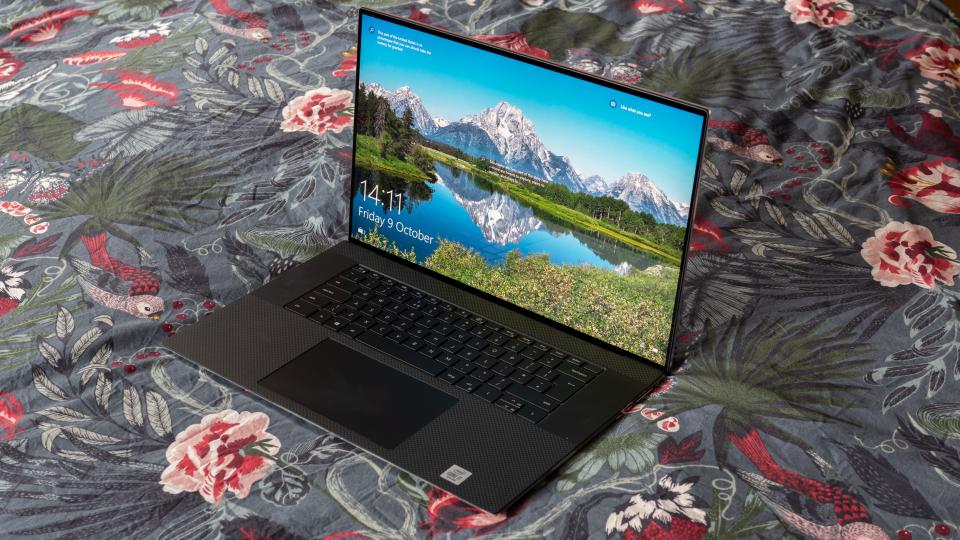
Price: £2,699 | Buy now from Dell
With a smart, sleek design and up to a 10th-gen Intel Core i9 under the hood, Dell’s XPS 17in is a true MacBook Pro alternative for Windows-based video editors.
While the base model comes with a 1,920 x 1,080 display, the Dell XPS 17 really holds its own once configured with the Dolby Vision supporting 3,840 x 2,600 touchscreen. 4K resolution on a 17in monitor gives you acres of space to work within while editing, a true blessing for anyone used to working on smaller 13in machines. Despite this generous screen size, its slim build means it’s not gargantuan in stature. While it is a little on the heavy side, slim screen bezels means it can still just about sneak into a 15in laptop bag.
As for connectivity, there are four USB-C ports, each with Thunderbolt 3 support, and, handily, a built-in SD card reader.
While it can’t compete with the battery life of the smaller M1 MacBooks, it lasted a respectable 7hrs 42mins during our video playback test, narrowly edging out the 16in MacBook Pro.
Read our full Dell XPS 17in review
Key specs – Screen size: 17in; Resolution: 3,840 x 2,400; CPU: Intel Core i7; RAM: 16GB; Graphics: Nvidia GeForce RTX 3060 with 6GB VRAM; Storage: 1TB; Measurements: 374 x 248 x 20mm (WDH); Weight: 2.5kg
3. Apple MacBook Pro 14in (M1 Pro, 2021): An exceptional all-rounder
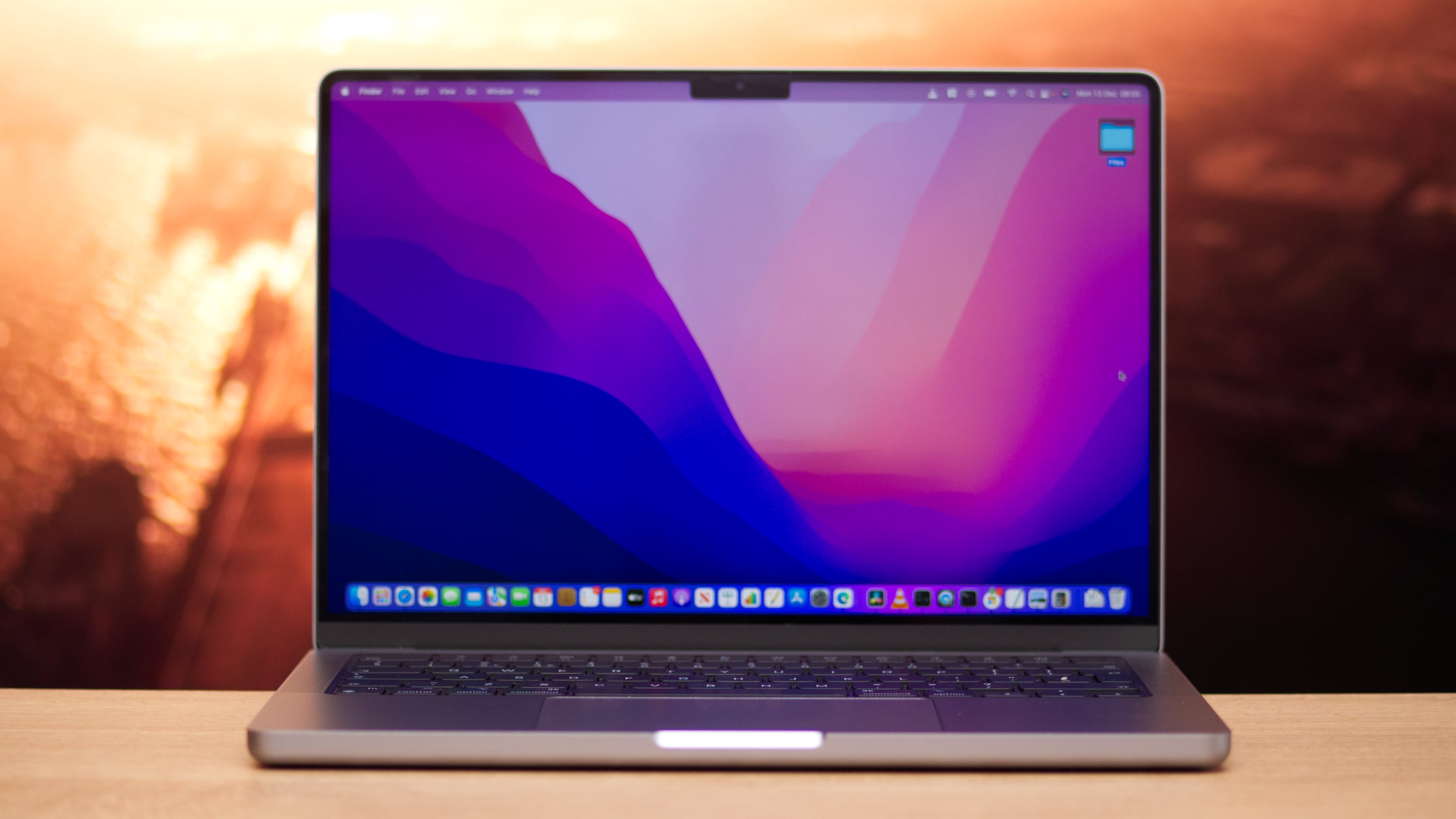
Price from: £1,899 | Buy now from John Lewis
Apple’s all-new 14in MacBook Pro packs the latest refinements and much of the same performance of the flagship 16in M1 Pro MacBook, into a smaller, more affordable package.
Like its 16in sibling, the 14in MacBook Pro is built around Apple’s latest in-house processors. The base model packs an M1 Pro chip with an 8-core CPU and 16-core GPU, and comes with 16GB of RAM and 512GB of SSD storage. Ten-core M1 Pro and M1 Max versions are also available and you can specify up to 64GB of RAM and 8TB of storage if you have a few grand to spare.
In our in-house testing, we found the laptop’s Liquid Retina XDR display performed faultlessly, with impressive peak brightness levels, great contrast and professional-level colour accuracy.
It also boasts excellent connectivity, with a full-sized HDMI 2.0 port, a built-in SD card reader and three Thunderbolt 4 USB ports. Plus, Apple has brought back MagSafe charging with the new MacBooks, so there’s less risk of your pride and joy being tugged onto the floor by its power cable.
The 14in M1 Pro MacBook is an excellent all-rounder. If your work demands more screen real estate, then the 16in model is certainly worth considering but for editing on the move, the smaller, lighter and cheaper 14in model offers a serious edge.
Read our full Apple MacBook Pro 14in review
Key specs – Screen size: 14in; Resolution: 3,024 x 1,964; CPU: Apple M1 Pro; RAM: 16-64GB; Graphics: Apple M1 Pro; Storage: 512GB-8TB; Measurements: 316 x 221 x 16mm (WDH); Weight: 1.6kg
4. Lenovo Legion 5: Best Windows laptop for video editing under £1,500
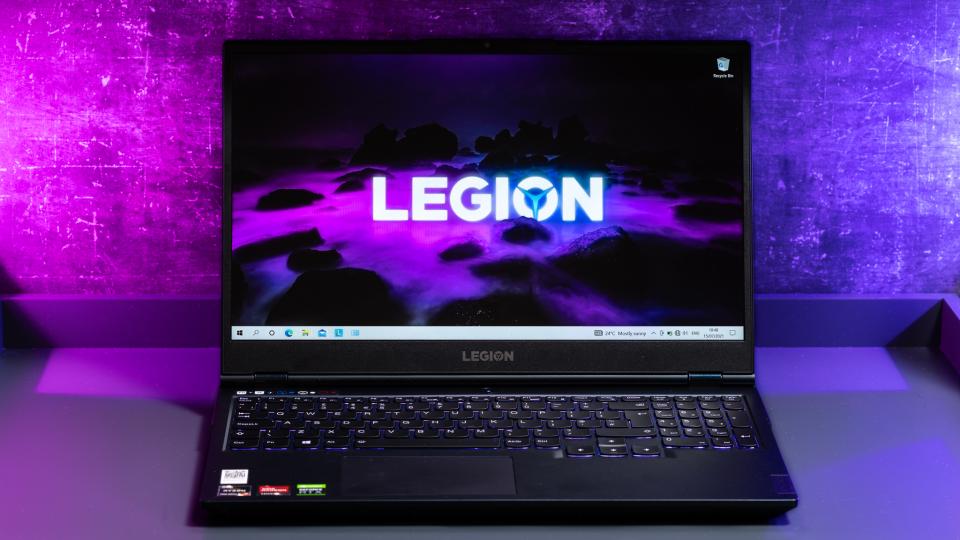
Price: £1,300 | Buy now from Lenovo
Competition in the mid-range gaming laptop market is fierce and, fortunately for us video editors, this means there are a number of highly specified Windows machines to pick from. The Lenovo Legion 5 is a standout, offering a well-rounded package for under £1,500.
As you’d expect from a competitive gaming system, the Legion 5 packs plenty of punch. Under the hood there’s an eight-core AMD Ryzen 7 5800H processor, 512GB of SSD storage, 16GB of RAM and an Nvidia RTX 3070 with 8GB of dedicated VRAM. Additionally, both the storage and RAM are user-replaceable, giving you the option to upgrade down the line.
The display is solid, with good brightness, contrast and colour accuracy and the keyboard is excellent. As an added convenience, Lenovo has positioned the bulk of the Legion 5’s ports on the back, helping to keep workspace cable clutter to a minimum.
Read our full Lenovo Legion 5 review
Key specs – Screen size: 15.6in; Resolution: 1,920 x 1,080; CPU: AMD Ryzen 7 5800H; RAM: 16GB; Graphics: Nvidia GeForce RTX 3070 with 8GB VRAM; Storage: 512GB; Measurements: 363 x 261 x 26mm (WDH); Weight: 2.4kg
5. Asus ROG Zephyrus Duo 16: Two screens are better than one
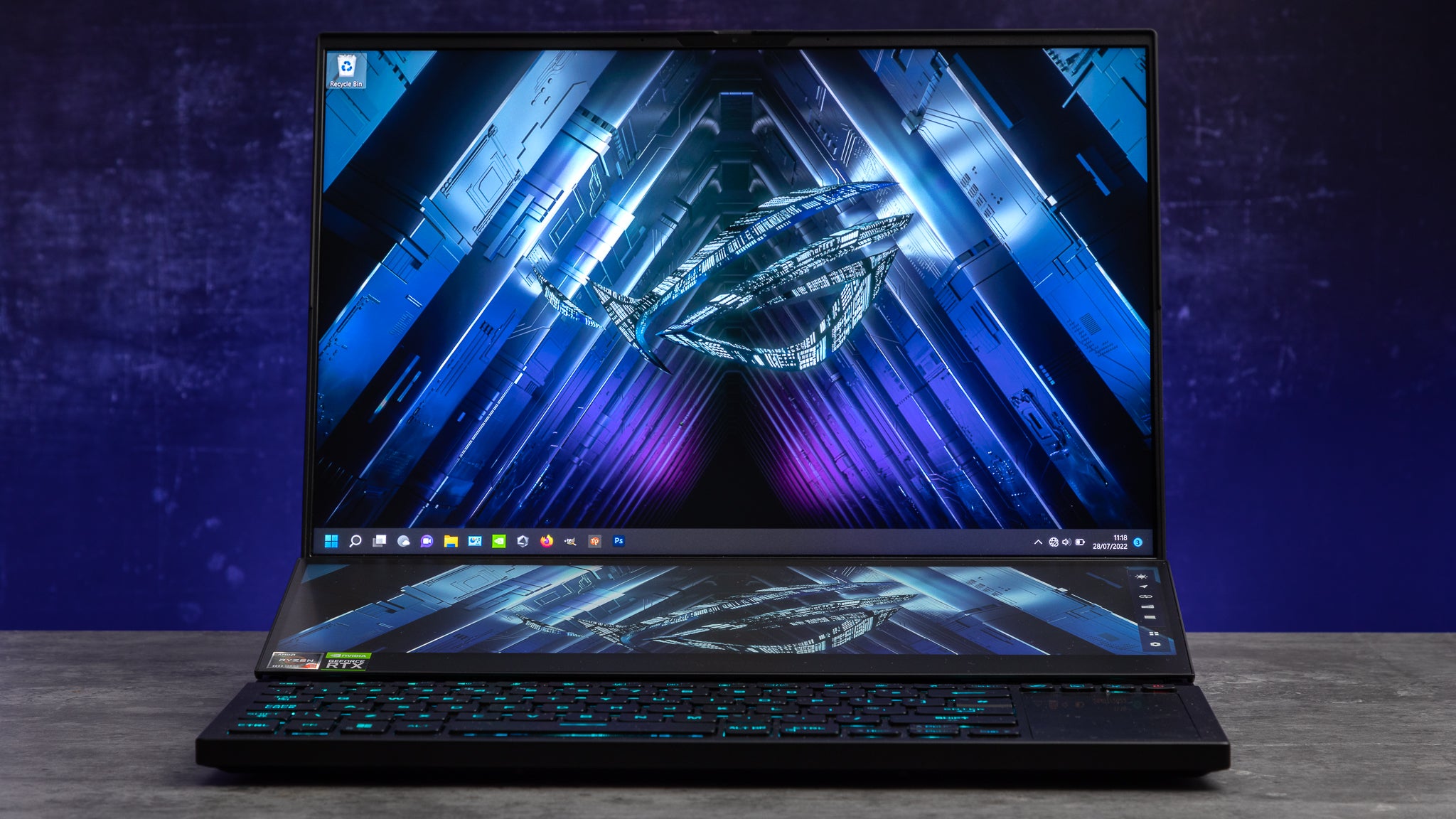
Price: £4,499 | Buy now from Currys
Take one look at the Zephyrus Duo 16 and you’ll quickly see what sets it apart. A stand out not just on our list, but among laptops in general, the Duo 16 adds a complete second display above the keyboard.
This ultra-wide 14in touchscreen, dubbed the ScreenPad can be used to extend your primary workspace. It means that while using applications such as Adobe Premiere Pro, you can drag whole panels onto the second display. You can even move your entire video timeline down there, freeing up a massive amount of screen space for other panels and toolbars. The ScreenPad also elevates to reveal two air intakes, allowing the machine to run hard and fast without running into overheating issues.
Lightweight this machine is not, but what you lose in portability you gain in sheer hardware power. Although available in a range of lower spec, but still capable Full HD configurations, the 4K variant is where you’ll see the best performance. Boasting an AMD Ryzen 9 6900HZ CPU, 32GB of RAM, a 4TB SSD and an Nvidia GeForce RTX 3080Ti with 16GB VRAM, this is a beast of a setup by any measure.
Ergonomically it can take a little getting used to as both the keyboard and trackpad have been rearranged slightly to accommodate the second screen. Given the extra screen real estate you gain, however, I’d say for many it’ll be well worth adapting to.
Read our full Asus ROG Zephyrus Duo 16 review
Key specs – Screen size: 16in & 14in; Resolution: 3,840 x 2,400 (16in), 3,840 x 1100 (14in); CPU: AMD Ryzen 9 6900HZ; RAM: 32GB; Graphics: Nvidia GeForce RTX 3080Ti with 16GB VRAM; Storage: 4TB; Measurements: 355 x 266 x 21mm (WDH); Weight: 2.5kg
6. Razer Blade 17: An all-powerful Windows workstation
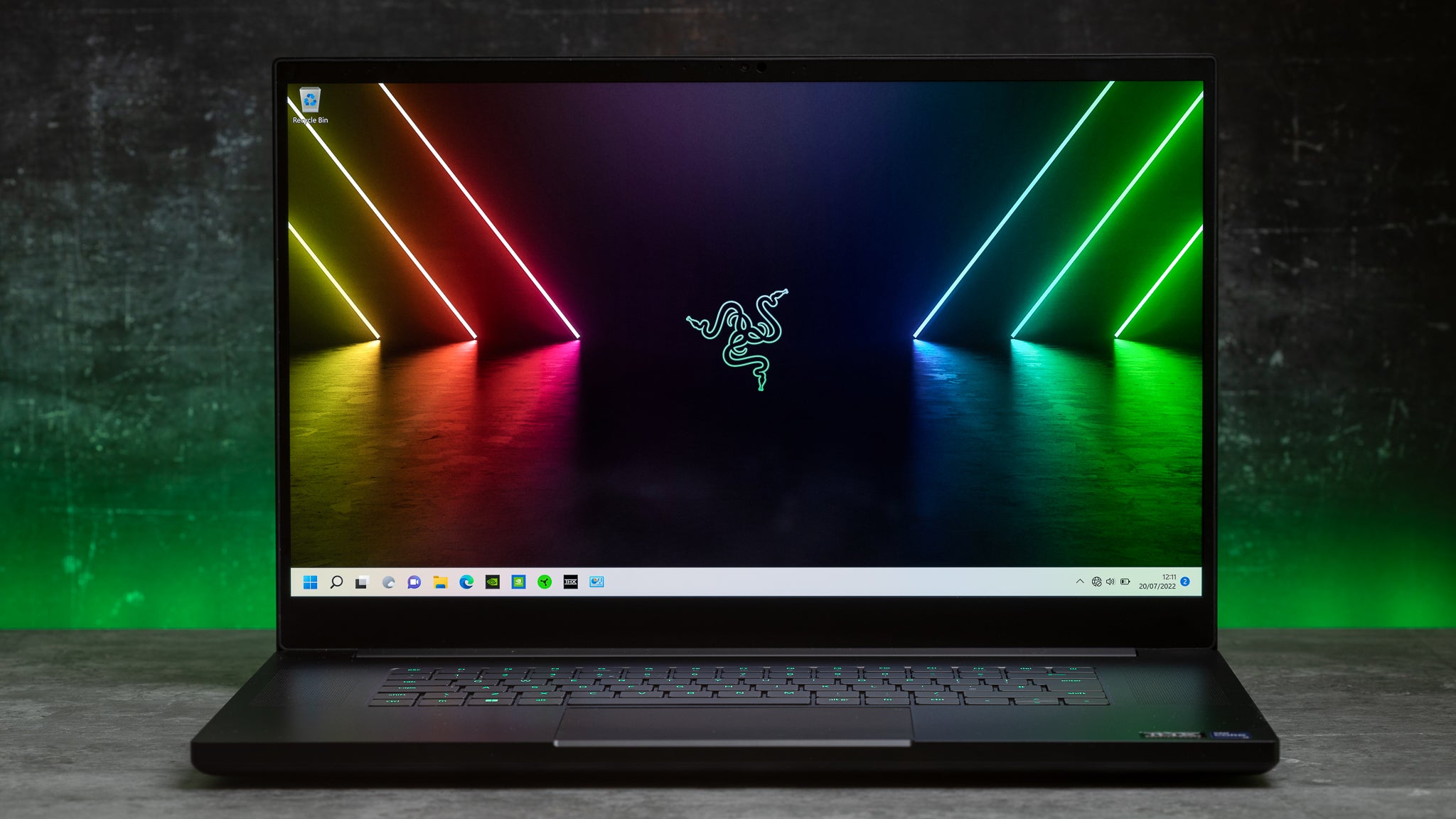
Price: £4,500 | Buy now from Amazon
Budget-friendly this laptop is not. But, if you’re looking for a no-holds-barred Windows workstation, the Razer is a blazingly fast, aluminium annihilator.
Specced out to lap up demanding workloads, the Blade 17 will happily contend with 4K video editing, 3D design and AAA gaming alike. With a 14-core 12th-gen Core i9 CPU, 32GB of RAM and a powerful Nvidia RTX 3080Ti GPU with 16GB of VRAM, slick rendering and video encoding speeds are a given.
The display is also noteworthy. With a 4K resolution at 17in you’ve got plenty of space to work with and – a standout on our lineup – it supports 144Hz refresh rates for a buttery smooth response.
Unlike some of the more minimalist laptops on our list, the Razer Blade 17 doesn’t skimp on ports either, with a pair of Thunderbolt 3 USB-C sockets, a trio of USB-A connections, a built-in SD card reader and a 2.56GB Ethernet port.
Razer’s true achievement with the Blade 17 is creating a notebook for both gamers and creatives that can fully satisfy both. That’s not an achievement that comes cheap but it’s worth every single, solitary penny.
Read our full Razer Blade 17 review
Key specs – Screen size: 17in; Resolution: 3,840 x 2,160; CPU: Intel Core i9-12700H 14-core; RAM: 32GB; Graphics: NVIDIA GeForce RTX 3080Ti with 16GB VRAM; Storage: 1TB; Measurements: 260 x 395 x 20mm (WDH); Weight: 2.75kg
7. M2 Apple MacBook Air: Best budget Apple for video editing
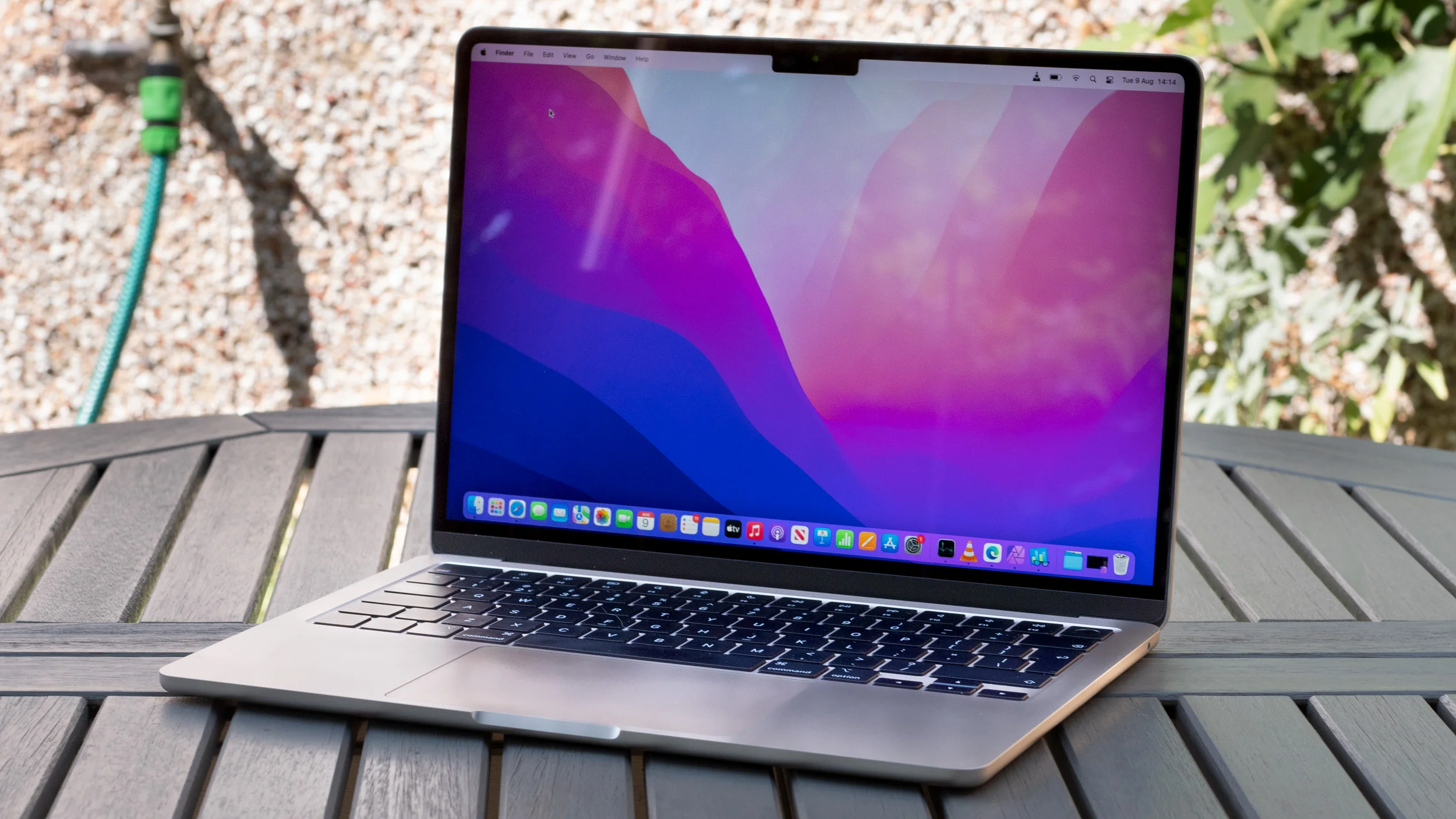
Price: £1,119 | Buy now from John Lewis
The MacBook Air has been around for over a decade now, pitched as a macOS option ideally suited to lightweight tasks – not exactly well suited for demanding work like video editing. With Apple’s M-equipped machines, however, the MacBook Air has become a serious contender.
That new Apple Silicon chip gives the MacBook Air more than enough muscle to handle the video-editing basics. Sure, if you’re buying for work, looking to handle dense multi-tracked timelines and edit in 4K, a MacBook Pro is likely worth the extra investment. But, for casual editing and for those getting started, it certainly isn’t half bad. And, as it’s a Mac, it comes pre-loaded with Apple’s iMovie video editor, allowing you to get up and running right from the get-go.
In addition to the M2 processor the MacBook Air also packs an impressive display. The panel is reasonably bright, contrasty and more colour accurate than the vast majority of its rivals at this price point. You also get a pair of Thunderbolt 3 USB-C ports and a battery that managed 17 hours of video playback in our in-house battery test.
Read our full M2 Apple MacBook Air review
Key specs – Screen size: 13.3in; Resolution: 2,560 x 1,664; CPU: Apple M2; RAM: 8GB; Graphics: Apple M2; Storage: 256GB; Measurements: 304 x 212 x 16mm (WDH); Weight: 1.3kg
8. Honor MagicBook Pro: Best video-editing laptop under £1,000
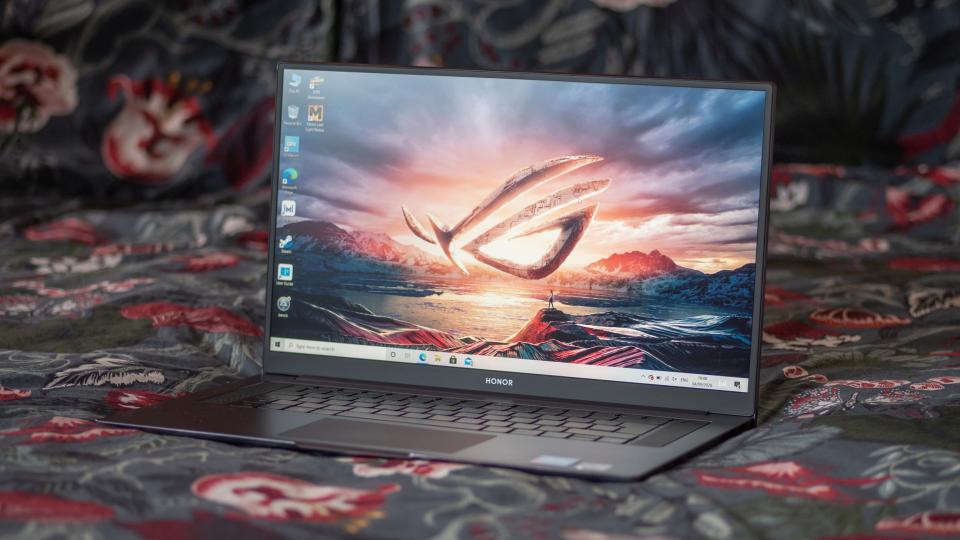
Price: £850 | Buy now from Honor
Do a bit of shopping around and you’ll quickly discover that the definition of “budget” can get a little loose when it comes to video-editing setups. Fortunately, Honor’s MagicBook is a bit of an exception.
While it may not rival the top-end machines in our roundup, it’s far from a slouch. With a six-core AMD Ryzen 5 processor, 512GB of SSD storage, 16GB of RAM and Radeon RX Vega 6 integrated graphics you’ll be well set to start editing.
For the money, the MagicBook Pro presents a package that’s nigh on impossible to top for the money. Although not the sharpest, the Full HD display is bright and colour accurate, battery life is respectable, and it’s well stocked for ports too, with one USB-C, two USB-A and HDMI all available.
Read our full Honor MagicBook Pro review
Key specs – Screen size: 16.1in; Resolution: 1,920 x 1,080; CPU: AMD Ryzen 5 4600H; RAM: 16GB; Graphics: Integrated AMD Radeon Graphics; Storage: 512GB; Measurements: 369 x 234 x 17mm (WDH); Weight: 1.7kg
9. M1 Apple MacBook Pro 13in: A well-priced portable powerhouse
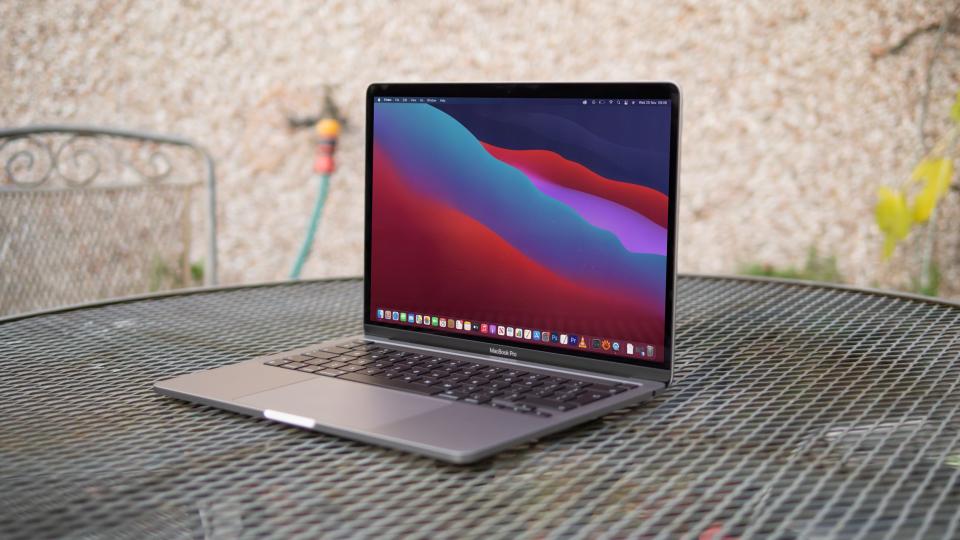
Price: £1,350 | Buy now from Amazon | Buy now from John Lewis
While things may look business as usual on the outside, Apple’s 13in MacBook Pro has a new heart, thanks to its new M1 processor. Impressively fast, the M1 chip makes light work of video encoding, keeping up with the Intel chips found in much pricier systems.
Aside from being quick, the 13in MacBook Pro is a well-rounded machine. While it’s not particularly large, the display is detailed and colour-accurate, the built-in speakers are fantastic and battery life is truly exceptional.
While limited in number, the two USB-C ports can be adapted to just about any peripheral using the appropriate dongle. Both ports also support Thunderbolt 3/USB 4 (up to 40Gbits/sec), providing speedy access to external storage.
The only thing to look out for is software compatibility with the M1 chip. While most mainstream applications already support M1 Macs, either natively or through emulation, you’ll find that some apps and plug-ins are currently still incompatible. Compatibility will only improve as time goes on, but it’s certainly worth checking out.
Read our full M1 Apple MacBook Pro review
Key specs – Screen size: 13.3in; Resolution: 2,560 x 1,600; CPU: Apple M1; RAM: 8GB; Graphics: Apple M1; Storage: 512GB; Measurements: 300 x 212 x 16mm (WDH); Weight: 1.4kg








